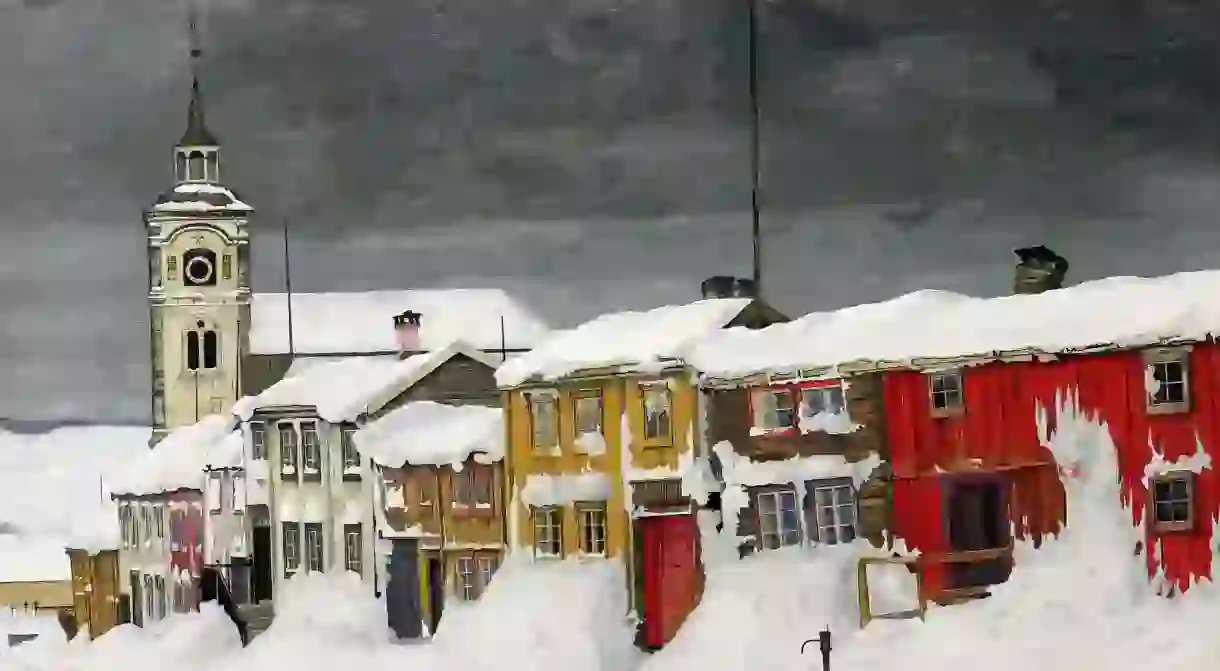The Best Art Galleries in Oslo

Pending the opening of Oslo’s promising-looking new National Gallery in 2020, there are plenty of interesting and varied art galleries and museums to explore in Norway’s capital. While most people outside of Norway have heard of Edvard Munch’s The Scream, Norway is also the home of many other artistic works from inside and outside of Norway equally worth getting to know.
The National Gallery (Current)
Museum

Located close to the National Theatre in the city centre, the National Gallery has showed off Norway’s most treasured art, artists and movements since 1837. The Munch room, featuring some of Munch’s most famous pieces including The Scream, Madonna and The Dance of Life, explores Munch’s experiments with expressionism and symbolism from the 1880s through to 1920, and provides a fascinating glimpse into Munch’s mental state. Although they may not be as well-known internationally, the Norwegian national romantic and social realist movements of the 19th and 20th centuries had a tremendously important influence on Norwegian identity and culture which continues to this day, and both are well-represented at the National Gallery through artists such as Johan Christian Dahl, Adolph Tidemand and Christian Krohg.
Astrup Fearnley Museum of Modern Art
Building, Museum, Park, Art Gallery

The Astrup Fearnley began as a gallery mainly showing off treasures from a private collection of modern art dating back to the 1960s, but since its opening in 1993, the collection has expanded significantly and widened its focus to a more broadly international perspective. It has developed along with the art world, reflecting the movements and styles seen through the past decades and, with up to seven annual temporary exhibitions, it has its fingers on the pulse of contemporary art.
Museum of Contemporary Art
Museum

Like the National Gallery, the Museum of Contemporary Art will be part of the new National Museum at the old Vestbane Station by Aker Brygge from 2020. The current museum is closing its doors in September 2017, but a selection of its works will be displayed temporarily at the current National Gallery and at Mellomstasjonen, which also showcases the plans for the new museum, set to become one of the largest art museums in Northern Europe. The Museum of Contemporary Art hosts a wide range of Norwegian and international art in all its forms from painting to photography and sculptures to video installations. Current highlights include an exploration of the relationship between photography and reality as well as the playfully experimental work of internationally renowned Norwegian artist Tori Wrånes.
Henie Onstad Kunstsenter
Museum, Park

Although this one is a little further from the city centre (roughly 20 minutes by bus), it deserves a mention for its beautiful location as well as its extensive collection. Founded by the world-famous figure skater Sonja Henie and her husband Niels Onstad in the 1960s, the Henie Onstad Arts Centre is particularly pleasant in summer when a visit to the museum’s elegant rooms can be combined with a gentle stroll through the sculpture park and a swim in the fjord that the museum faces, possibly topped up with dinner or lunch at the Bølgen and Moi restaurant located on the premises. The museum houses more than 4,000 modern and contemporary works by artists such as Picasso and the CoBrA group and explores both well-known and more obscure genres from the past century. The museum stays up-to-date with artistic developments and puts on well-curated temporary exhibitions and installations ranging from paintings to performances.
The Vigeland Museum
Museum, Park

Apart from the works of Edvard Munch, Gustav Vigeland’s statues may be Norway’s most instantly recognisable contribution to art. The Vigeland Park in Frogner is one of Oslo’s most visited tourist destinations, and the Vigeland Museum provides an interesting insight into Vigeland’s sculptures, other art and life. Built in the 1920s by the municipality of Oslo specifically to be Vigeland’s home and studio, the museum buildings are considered one of Norway’s best examples of neoclassic architecture. Built up around an atrium, the rooms now display the models for Vigeland’s famous park sculptures as well as drawings, photographs and carvings made by the partner through several decades, allowing visitors to track his artistic progress. The atelier became a hub for Oslo’s local artists in the interwar period, and Vigeland’s urn is actually interned in the house, which Vigeland convinced the municipality to build for him in exchange for it becoming a museum later on.
The Munch Museum
Library, Museum, Building, Opera House

No Norwegian artist is better known and more renowned, however, than Edvard Munch. The museum owns more than half of Munch’s paintings, most of his other art and many of his letters, and it is the undisputed mecca for Munch aficionados. The artist, one of the most important figures in the Modernist movement, actually painted several variations of many of his paintings, and versions of most of his most famous works can be found at the museum. The Munch Museum has hosted many illuminating exhibitions juxtaposing the work of Munch and other modern artists in collaboration with other museums around the world. The museum, which was built specifically to house Munch’s collections in the 1960s, will move to a new elaborate building next to the Opera House at Bjørvika in 2019.
Several excellent smaller, specialised and experimental galleries exist in areas such as Grünerløkka, St. Hanshaugen and near the museum quarter by Rådhusgata.
Featured image by Ilkka Jukarainen.
Several excellent smaller, specialised and experimental galleries exist in areas such as Grünerløkka, St. Hanshaugen and near the museum quarter by Rådhusgata.
Featured image by Ilkka Jukarainen.













